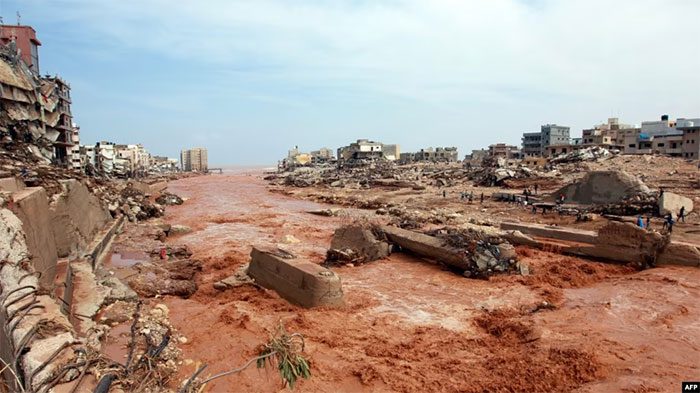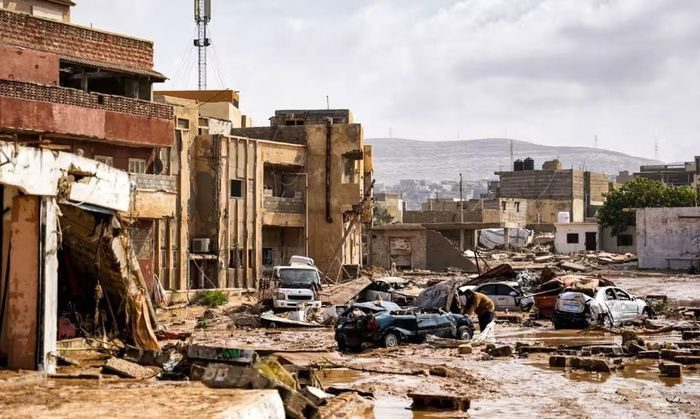According to the Interior Ministry officials of the Eastern Libyan government, the death toll following the severe flash floods that occurred on September 10 in the city of Derna, located in the eastern part of the country, has risen to 3,060. Forecasts indicate that the death toll will continue to rise in the coming days as 5,200 individuals are still missing.

Destruction caused by flooding from Storm Daniel in Derna, Libya, on September 11, 2023. (Photo: AFP/TTXVN).
Currently, there are still 260 unidentified bodies being stored and preserved in the hospitals of Derna. Rescue teams continue to engage in search and rescue operations, discovering more bodies of victims within the city.
At this moment, questions are being raised about how the storm had such a significant impact and whether it was intensified by changes in the Mediterranean weather patterns due to climate change.
Throughout the past summer months, the region has experienced unprecedented heat waves. Scientists state that this heatwave has raised sea surface temperatures, which could influence the formation of a tropical storm similar to those seen in the Mediterranean.

Destroyed vehicles and damaged buildings in the city of Derna, east of Benghazi. (Photo: AFP).
Dr. Karsten Haustein, a climate scientist, stated: “While there has not been an official attribution regarding the role of climate change in making Storm Daniel more severe, it can be said that the Mediterranean sea surface temperatures have been significantly higher than average throughout the summer.”
“This is certainly true for the area where Daniel could form and devastate Greece and now Libya… Warmer water not only causes storms through increased rainfall intensity but also makes them more aggressive.”
However, experts suggest that the storm itself is not entirely to blame for the devastation in Derna, where infrastructure, including broken dams, was already in poor condition. Like many other impoverished nations, Libya was simply unprepared for the severe weather that Daniel brought.
Dr. Kevin Collins, a senior lecturer in environment and systems at The Open University, emphasized: “It’s important to recognize that the storm itself is not the sole cause of the loss of life.”
“This is partly due to Libya’s limited ability to forecast weather impacts, restricted warning and evacuation systems, and inadequate planning and design standards for infrastructure and cities.”
“As our climate changes, understanding, planning for, and adapting to these more extreme events must be undertaken by individuals, businesses, and communities in all countries.”
Professor Lizzie Kendon, a climate science professor at the Cabot Institute for the Environment at the University of Bristol, remarked: “We anticipate that the intensity of heavy rainfall will increase as the world warms. This will not be seen as a smooth trend, and we can expect unprecedented extreme events to occur in the observational record.”
“Storm Daniel exemplifies the catastrophic flooding disasters that we predict will become more frequent in the future. Such disasters can occur due to climate change – as they have in the past. Therefore, caution is necessary before linking any specific extreme phenomena to climate change.”




















































